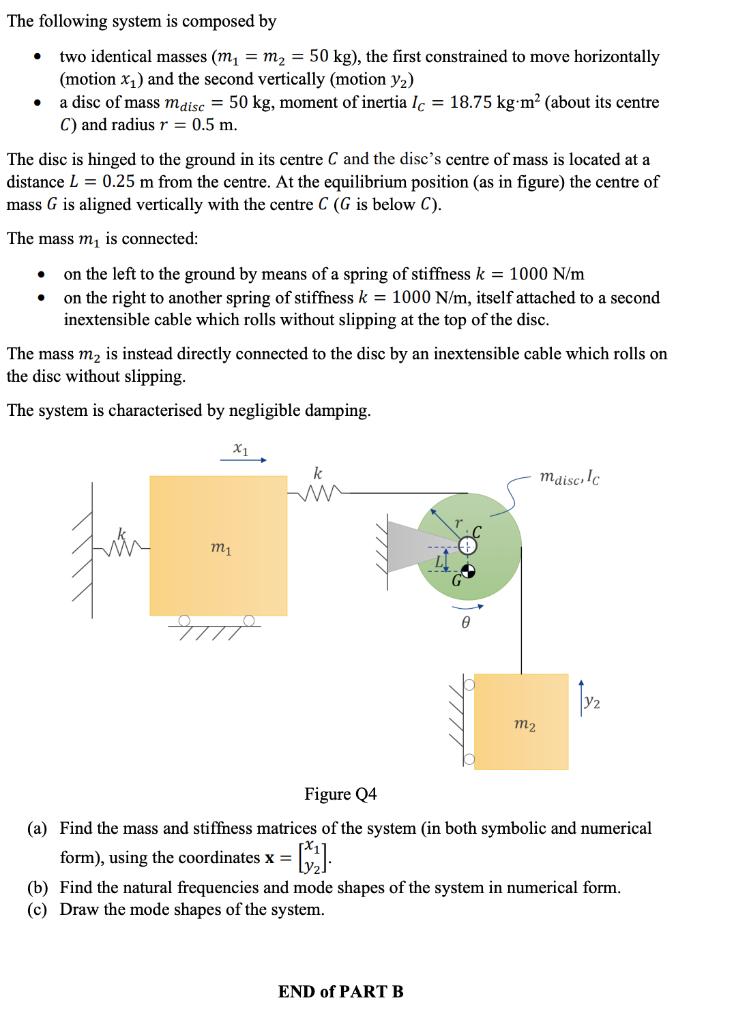Answered step by step
Verified Expert Solution
Question
1 Approved Answer
The following system is composed by two identical masses (m, = m2 = 50 kg), the first constrained to move horizontally (motion x1) and

The following system is composed by two identical masses (m, = m2 = 50 kg), the first constrained to move horizontally (motion x1) and the second vertically (motion y2) a disc of mass maisc = 50 kg, moment of inertia lc = 18.75 kg m? (about its centre C) and radius r = 0.5 m. The disc is hinged to the ground in its centre C and the disc's centre of mass is located at a distance L = 0.25 m from the centre. At the equilibrium position (as in figure) the centre of mass G is aligned vertically with the centre C (G is below C). The mass m, is connected: on the left to the ground by means of a spring of stiffness k = 1000 N/m on the right to another spring of stiffness k = 1000 N/m, itself attached to a second inextensible cable which rolls without slipping at the top of the disc. The mass m, is instead directly connected to the disc by an inextensible cable which rolls on the disc without slipping. The system is characterised by negligible damping. k maisc. lc m2 Figure Q4 (a) Find the mass and stiffness matrices of the system (in both symbolic and numerical form), using the coordinates x = (b) Find the natural frequencies and mode shapes of the system in numerical form. (c) Draw the mode shapes of the system. END of PARTB
Step by Step Solution
★★★★★
3.50 Rating (167 Votes )
There are 3 Steps involved in it
Step: 1

Get Instant Access to Expert-Tailored Solutions
See step-by-step solutions with expert insights and AI powered tools for academic success
Step: 2

Step: 3

Ace Your Homework with AI
Get the answers you need in no time with our AI-driven, step-by-step assistance
Get Started


